The OnePlus 7 Pro is the Chinese manufacturer’s latest high-end device which comes with a tele-lens equipped rear camera but also has a lot on offer for selfie shooters. The front camera features a pop-up design which means it does not occupy any space on the display and only pops up when needed. Image information is captured on a 1/3″ Sony 16MP sensor and the lens offers a 25mm-equivalent focal length and an f/2 aperture. Like on the front cameras of many other devices there are no autofocus or optical stabilization systems. Read our full review to find out how the OnePlus 7 Pro front camera performed under our DxOMark Selfie test protocol.
Key front camera specifications:
- Pop-up front camera
- 16Mp 1/3″ Sony IMX 471 sensor with 1µm pixels
- 25mm-equivalent focal length
- f/2 aperture
- Fixed focus
Please note: The camera firmware used for the DxOMark tests is not yet currently available to consumers. OnePlus will make it available as an over-the-air update before the end of the month.
About DxOMark Selfie tests: For scoring and analysis in our smartphone front camera reviews, DxOMark engineers capture and evaluate over 1500 test images and more than 2 hours of video both in controlled lab environments and in natural indoor and outdoor scenes, using the camera’s default settings. This article is designed to highlight the most important results of our testing. For more information about the DxOMark Selfie test protocol, click here.
Test summary


The OnePlus 7 Pro’s DxOMark Selfie score of 86 points places it close to the top group in our Selfie ranking. The overall score is founded on an excellent Photo score of 90 points, which the OnePlus achieves thanks to good color with pleasant skin-tone rendering and exposure on faces in most situations, as well as on a decent level of detail rendering when shooting at close- and mid-range subject distances. It also comes with the best front camera flash we have seen so far.
The camera is slightly limited by the shallow depth of field of its fixed-focus lens, however, which means that people towards the back in group shots might be out of focus; moreover, shooting with a selfie-stick is not recommended either if you need perfect sharpness on your face. The 7 Pro is not the only fixed-focus front camera with this issue, but it’s a little more pronounced on the OnePlus than on some competitors.
Other points of criticism include slightly elevated noise levels under indoor illumination and in low light, as well as noticeable anamorphosis (perspective deformation) on faces close to the edges of the frame. The 7 Pro’s background-blurring bokeh mode is capable of producing natural-looking results, but images often come with quite intrusive subject isolation artifacts.
As with its still images, the 7 Pro’s video footage shows good target exposure and natural skin tones in most situations, earning the camera a Video score of 81 points. Our testers also liked the performance of the stabilization system when recording while walking, but some camera-shake is usually noticeable when holding the camera still. The shallow depth of field of the lens also impacts video footage, but is less noticeable than in still images. Noise and noise-related artifacts are quite intrusive in low-light footage, so the OnePlus might not be for you if you shoot a lot of videos in dim conditions.
Photo scores explained
With a Photo score of 90 points, the OnePlus 7 Pro is one of the better front cameras for still imaging that we have tested to date. We calculate the photo score from results and analyses of tests that examine different aspects of a device’s still-image performance under different lighting conditions. In this section, we’ll take a closer look at these image quality sub-scores, analyzing some aspects of the OnePlus 7 Pro versus its key competition.

Exposure and Contrast
OnePlus 7 Pro
80
91
The OnePlus 7 Pro front camera achieves a good score for this test criterion, thanks to consistently good exposure on faces. Target exposure is good down to low light levels, with images captured at 5 lux still usable. Only at even dimmer light levels did we observe significant underexposure. On the downside, the 7 Pro’s HDR capabilities are a little limited, which can result in some quite severe highlight clipping in backgrounds or on skin, as you can see in the samples below. This said, the OnePlus doesn’t do any worse in this respect than the competition in our comparison.
Face exposure is excellent in the indoor sample below. Again, some highlight details are lost in the background, but the target exposure on the face is better than on the iPhone XS Max and the Pixel 3. These two latter devices retain better detail in the background, but at the cost of some underexposure on the face.

Color
OnePlus 7 Pro
87
105
The 7 Pro front camera generally renders skin tones and background colors vividly but accurately under both bright outdoor and typical indoor conditions. In the samples below, you can see by comparison that the iPhone XS Max and Google Pixel 3 produce slightly more subdued colors.
We sometimes noticed a slight pinkish cast in outdoor and indoor images, though—and not just only on skin tones, but across the entire image. (The color patches generated during our lab testing confirm this tendency.)
Color rendering under indoor lighting is very similar to outdoor conditions—that is, it is pleasant overall and a touch more vivid than the competition. Although we observed slight color shading in lab conditions, this was not noticeable when capturing real-life scenes.

Focus
OnePlus 7 Pro
64
97
The OnePlus 7 Pro front camera comes with a fixed focus-lens, which on the one hand eliminates any potential erratic autofocus behavior, but on the other hand also means that the focus cannot adjust to variations in subject distance. In the graph below, you can see that the 7 Pro’s focus has been adjusted to deliver best sharpness at a subject distance between 50 and 60cm. At longer distances, measured acutance drops, meaning that subjects or other elements of the scene in the background or farther away from the camera will be rendered out of focus.
In terms of real-life shooting, this means that faces will be noticeably soft if you use a selfie-stick (approximately 120cm subject distance). In our comparison below, the Apple iPhone XS Max achieves a slightly better result despite also featuring a fixed-focus lens. However, the Google Pixel 3 (the only device in this comparison with front-camera autofocus) is capable of capturing a perfectly sharp image when mounting the phone on a selfie-stick.
Our three comparison test devices differ not only in terms of focus range but also in terms of depth of field. In the 7 Pro shot below, the two faces closest to the camera show good sharpness, but subjects further towards the back of the scene are out of focus. The same is true for the Apple iPhone image, but to a slightly lesser degree. The Pixel 3 offers by far the widest depth of field in this comparison, and achieves good sharpness for all subjects from front to back.

Noise
OnePlus 7 Pro
75
90
As long as you hold the camera at a close- or medium-range distance from your face when capturing a selfie, the OnePlus 7 Pro records good detail in bright conditions. Noise is very well-controlled on the face, but some luminance noise can be visible in blue skies and on other background elements. In our 1000 lux studio comparison below, you can see that the 7 Pro is on a very similar level as the iPhone XS Max in terms of image detail, but cannot quite match the excellent Google Pixel 3 front camera.
We observed a noticeable drop-off in detail in low light, with noise reduction blurring fine textures, and with noise creeping in as well. Both luminance and chromatic noise are quite visible in shadow areas and around edges. The 7 Pro’s low-light images are by no means terrible, but it cannot quite keep up with the best in class. The camera could do better both in terms of detail retention and noise reduction.

Artifacts
OnePlus 7 Pro
69
92
The OnePlus 7 Pro loses points for a number of minor image artifacts, including ringing, flare, a hue shift around clipped areas, and a loss of sharpness towards the edges of the frame. The most noticeable artifact, however, is anamorphosis (perspective deformation) on faces that are close to the edges of the frame. The effect is a little more pronounced than on some other devices that don’t correct it. The best-in-class devices—for example, the Google Pixel 3—are even capable of eliminating the effect entirely via a correction algorithm.

Flash
OnePlus 7 Pro
86
93
With a score of 86, the OnePlus 7 Pro is the best device for front-camera flash photography we have tested to date. Like some other devices, it briefly cranks up the brightness of the display to illuminate the subject. This results in good target exposure on the face and decent detail both for shots taken in complete darkness and for images captured at a low ambient light level of 5 lux.
Some luminance noise is visible on the skin and in the background, and there’s a very noticeable light fall-off towards the edges of the frame, however. We also observed some white balance instabilities when shooting in low ambient light, but overall, the OnePlus 7 Pro front camera performs very well in flash mode.

Bokeh
OnePlus 7 Pro
50
75
The OnePlus 7 Pro has no secondary depth-sensing camera at the front, so it relies purely on face recognition for its bokeh simulation mode. The results aren’t bad, but they can display some pretty obvious subject isolation errors. Objects in the foreground or background can be mistaken for part of the subject and remain unblurred, but in many cases the camera produces fairly pleasant results.
There is no blur gradient, however, and the constant degree of blur from foreground to background means the effect can look a little unnatural.
Video scores explained
The OnePlus 7 Pro front camera achieves a good Video score of 81 points, with overall image characteristics that are quite similar to the camera’s still image performance. The OnePlus 7 Pro’s Video sub-scores are as follows: Exposure (74), Color (79), Focus (66), Texture (54), Noise (61), Artifacts (78), and Stabilization (74).
At default settings, the OnePlus 7 Pro records 1080p footage at 30 frames per second. Target exposure is good on faces in pretty much all conditions, and only drops off in very low light (under 10 lux). Dynamic range is decent, but just like in stills mode, highlight clipping occurs in high-contrast scenes—for example, when recording in front of a sunny background. Color rendering and white balance deliver accurate results in most conditions. The 7 Pro does especially well with color under indoor lighting.
Noise is fairly well-controlled in bright light and indoor conditions, but becomes pretty intrusive when recording in low light. Further, textures are blurred; and texture artifacts, along with moving noise, reduce the perception of detail further. If you need decent detail when recording front camera video in low light, there are currently better alternatives to the 7 Pro.
As with still images, when shooting group portraits or with a selfie stick, the 7 Pro’s fixed-focus lens can be a limitation. Subjects further away than 55cm from the lens are out of focus, which means subjects at the back of group shots are rendered soft. (This said, the effect is less noticeable in video footage than in still images because of the lower video resolution.)
The OnePlus’s video stabilization works very well to counteract walking motion. Not only does it stabilize the face, but it stabilizes the entire frame, which makes for pretty smooth footage when walking while recording. It also does a decent job when holding the camera still, but some camera-shake will typically be noticeable in your clips.
Conclusion
With an overall Selfie score of 86 points, the OnePlus 7 Pro front camera cannot match the very best devices, but still puts in a very decent performance and comes in just below the top group in our DxOMark Selfie ranking. We liked its good exposure and color in most conditions, but the OnePlus really stands out for flash performance, making it a great option for shooting selfies in very dark conditions that require additional illumination.
On the downside, the quite shallow depth of field of the OnePlus’s fixed-focus lens can be a limitation when shooting group portraits or with a selfie stick, and noise is more intrusive under indoor lighting and in low light than for the best competitors. Video footage shows many of the same exposure and color characteristics as the 7 Pro’s still images. Stabilization is good for walking motion, but noise in low light is again an issue.
It depends on your individual requirements when determining if the 7 Pro front camera is the best option for you, but one thing is certain: its pop-up design it helps free up display space and makes the OnePlus stand out from the crowd.
Photo pros
- Pleasant skin tones, white balance, and color rendering
- Well-exposed faces in bright light and indoor conditions
- Fairly good detail rendering at close and medium range
- Good exposure, detail, and color when shooting with flash
Video pros
- Accurate target exposure in all conditions
- Good dynamic range in most conditions
- Accurate color and white balance in bright light and indoor conditions
- Decent stabilization when walking while recording
Photo cons
- Shallow depth of field
- Visible noise, especially indoors and in low light
- Anamorphosis (perspective deformation) on faces close to the edges of the frame
- Highlight clipping in high-contrast scenes
- Subject isolation artifacts in bokeh mode
Video cons
- Moving noise and texture artifacts
- Strong luminance and chroma noise in low light
- Lack of fine detail in low light
- Noticeable camera-shake when recording handheld
- Shallow depth of field


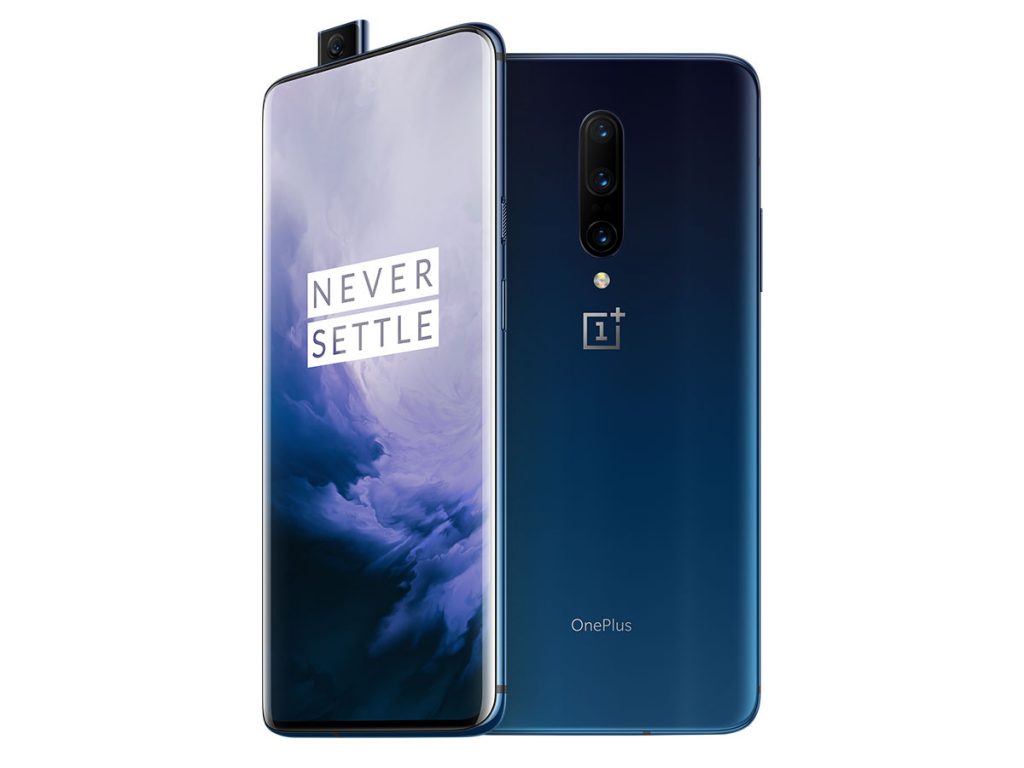


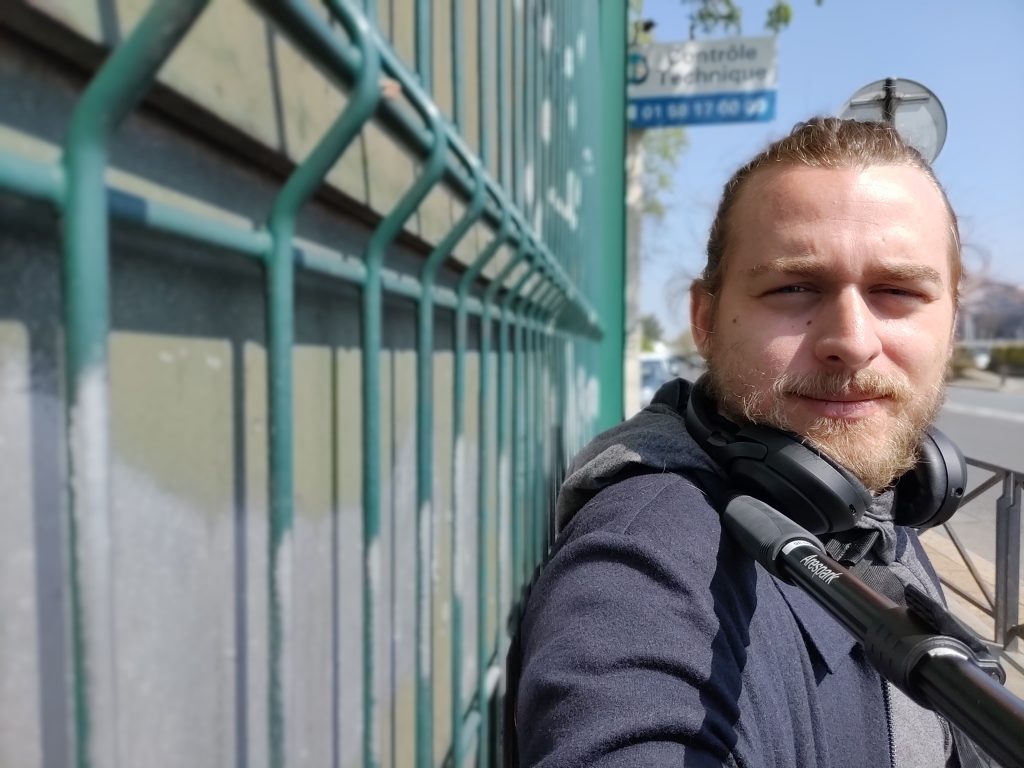









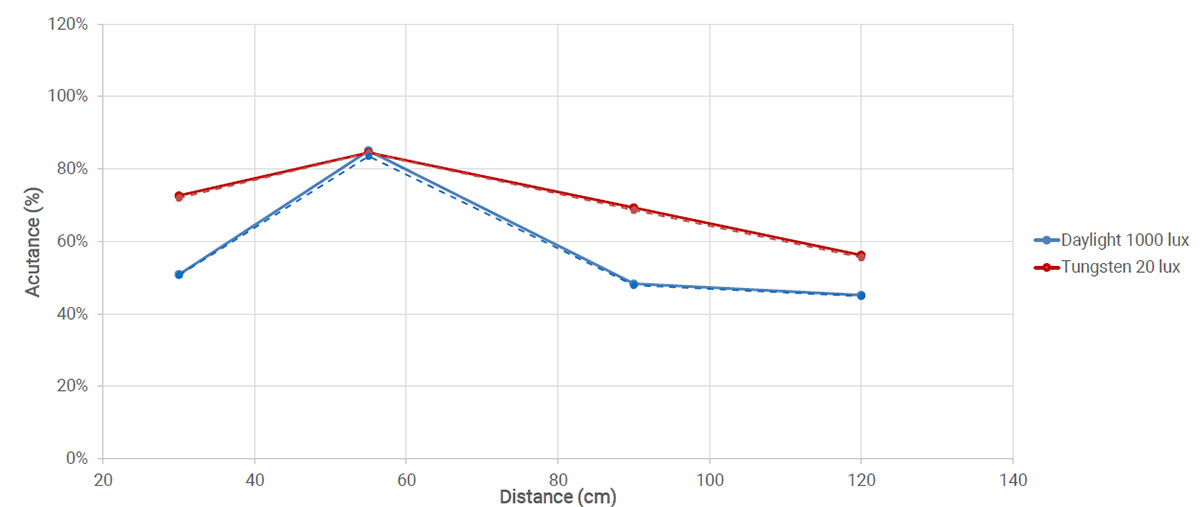


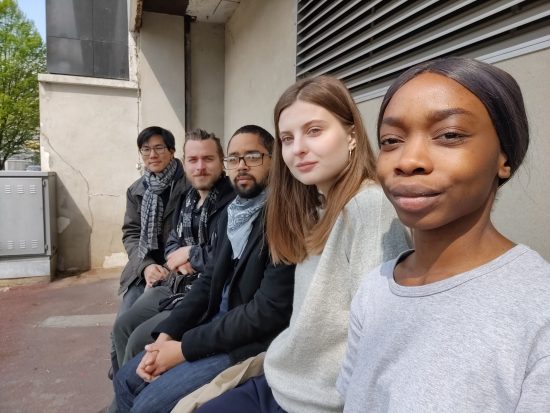
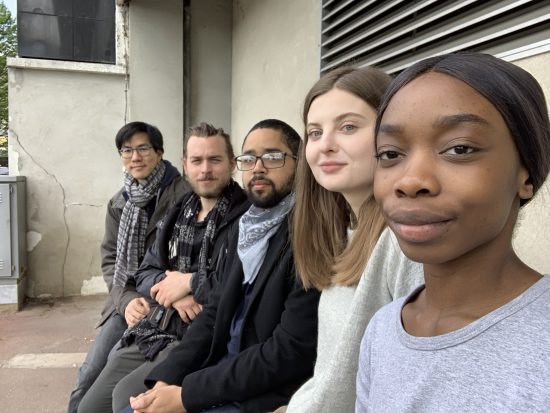




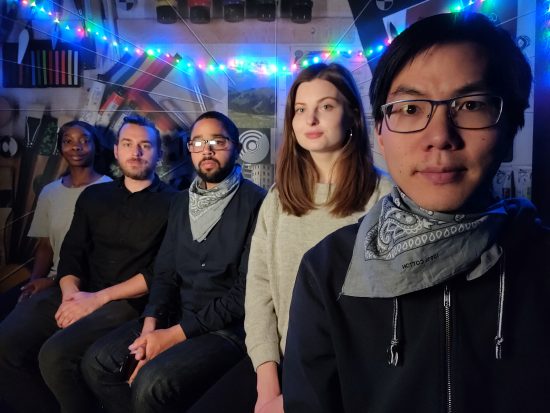
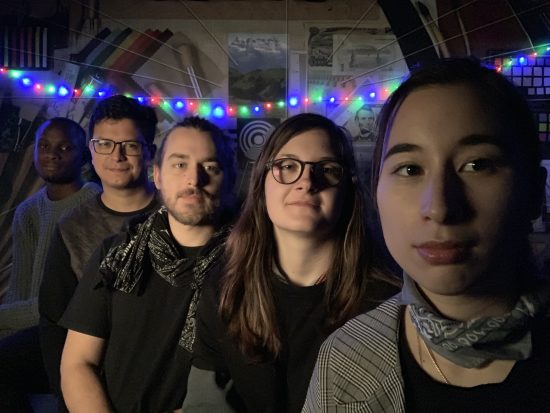





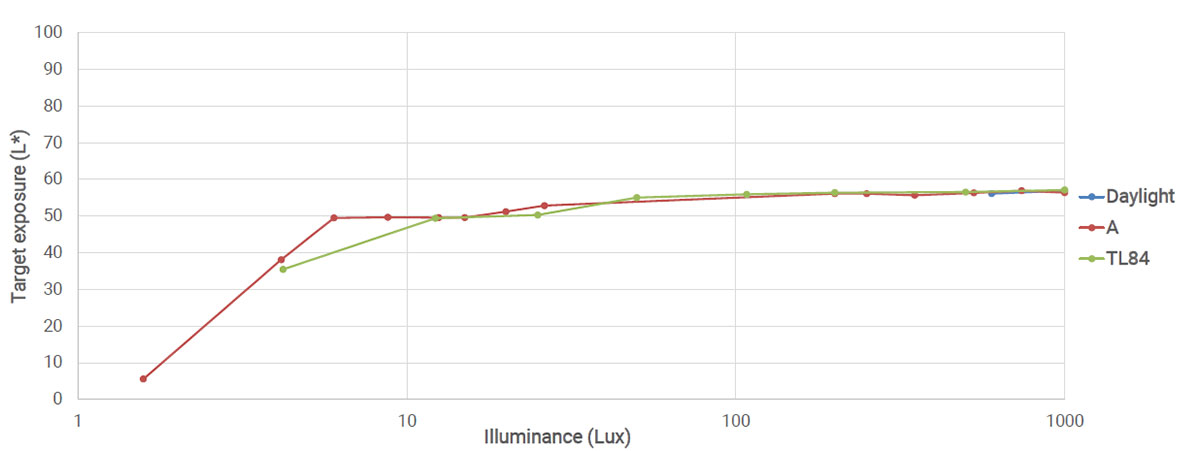
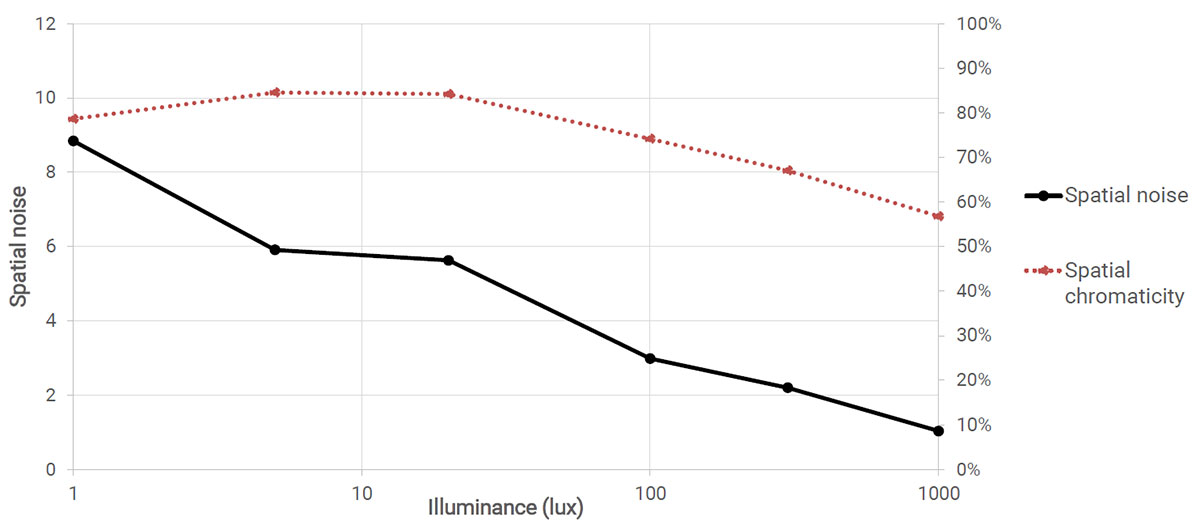
DXOMARK encourages its readers to share comments on the articles. To read or post comments, Disqus cookies are required. Change your Cookies Preferences and read more about our Comment Policy.